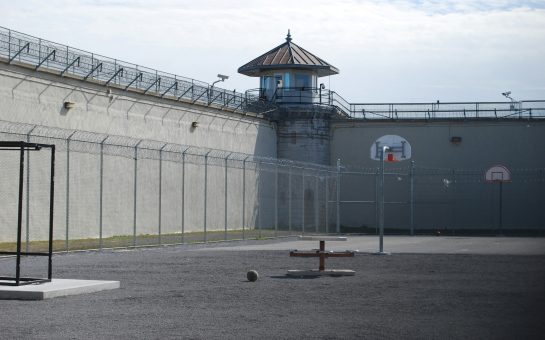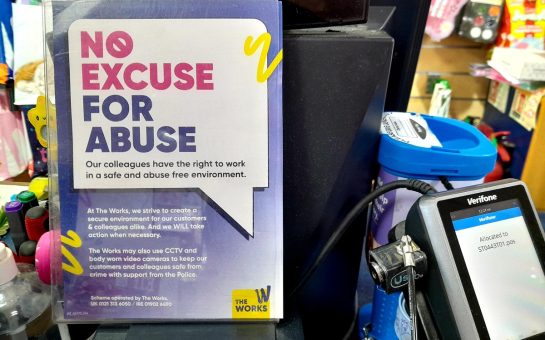Content Warning: This article contains content about self-harming behaviour
Prisons in England and Wales saw the highest number of self-harm incidents last year.
The latest Safety in Custody statistics from the Ministry of Justice (MOJ) show there were 79,027 self-harm incidents in prisons in 2024.
This is an 11.4% increase from the previous year of 2023, which was already at a 20 year high.
Self-harm incidents in prison have been consistently rising since 2014 and reached a peak in 2019 during Covid before subsequently dipping during 2020 to 2022, before all-time high figures were reported in 2023 and 2024.
Karyn Butt, a prison officer at HMP Aylesbury in Buckinghamshire, said: “It’s a very complex thing, self-harming.
“We have self-harmers who have swallowed batteries so that they go to hospital and change the scenery.
“We have some self-harmers that actually like to self-harm. It’s a way of them trying to control and coerce people to do what they want. They’re not getting what they want, so they will self-harm.”
Butt added she has seen cases where prisoners who have run out of vape cans will self-harm to try to get authorisation for more.
She added: “Other prisoners get resentful of the fact that some people manipulate to get what they want. But what do we do? Do we let them swallow batteries? We have a duty of care. We can’t let them swallow batteries, we have to take them to hospital. Or do we give them the vape cans?”
According to Butt, the reasons for prisoners self-harming vary widely but the majority of the time it is due to prisoners feeling low and depressed.
She said: “They’ve got things going on in their head. They don’t want their families to worry about it, but they have no thoughts of self-harm.
“Sometimes some feel before self-harm that they’re just feeling lost. That’s all it is. They don’t want to commit suicide. They just want to numb their feelings.”
Average figures of the past five years from 2020 to 2024 showing the number of self-harm incidents based on time spent in prison show a spike at one to three months.
Butt has seen firsthand how time in prison affects the rate of self-harm and says that the first couple of months can be very depressing and daunting.
This is regardless of whether the prisoner is on recall, a transfer, or brand new to the prison system as they all need to get used to a new regime.
“The level is high due mainly to that,” said Butt.
Butt added that they tend to see a lot of self-harm cases for prisoners in segregation, who are only out of their cell for a half an hour shower and half an hour of exercise daily.
This is evidenced in the recent report showing the number of self-harm incidents by location, in which segregation was the second highest location of self-harm at 9.5%.
The most common location for self-harm in prison was in “Normal” areas, which includes cells and common areas, accounting for three-quarters of incidents in 2024.
The age group that experiences the most cases of self-harm is 30-39, having the highest number of incidents on average over the past five years from 2020 to 2024.
Furthermore, shocking figures first collected in 2019 revealed the numbers of individuals having self-harmed “100 or more” times, with no data yet provided for 2024.
Between 2019 and 2023 there was a 33% increase in the number of male prisoners self-harming 100 or more times and a 126% in the number of females prisoners.
So, what is being done to tackle this growing issue?
There are current practices in place to help the many prisoners who self-harm.
All prisons have a department called the Safer Prisons Team and all new prisoners have an initial interview to assess thoughts of self-harm.
An Assessment, Care in Custody and Teamwork (ACCT) is opened for any prisoner that self-harms and usually involves hourly checks and three ‘meaningful’ conversations daily, which can be with the chapel, mental health team, or an officer.
More serious cases of prisoners who are suicidal or who have attempted suicide can involve being on constant watch to ensure their safety.
A prisoner will remain on an ACCT until self-harm ceases and a post-ACCT involves monitoring and conversations before officially closing the ACCT.
Butt says they can sometimes have eight ACCTs open at one time on one wing.
She added that is it important for officers to understand the background and triggers of prisoners who are self-harming to aid the process of getting out of the self-harm cycle.
A common trigger is family, with the law allowing prisoners to attend funerals of immediate family only.
“That doesn’t include grandparents. So if somebody was brought up by their grandparents, not their parents, they wouldn’t be allowed to attend the funeral,” Butt explained.
“They may take five steps forward and then one step back, but we don’t condemn them on that.
“We’ll say, you’ve lasted three months without doing anything to yourself. And one day you’ve had a little hiccup, so now we build up on it again. We just have to break that vicious circle.”
Despite the significant number of self-harm incidents, there have been successful cases of aiding prisoners to break the cycle.
One prisoner, who Butt worked with for two years, experienced trigger dates on their son’s birthday and the death of a family member.
Butt explained: “He voluntarily went on a drug-free wing to get off of his drugs and to get off the self-harming. And for the last eight months, he’s done nothing to himself.”
Through appropriate support they found ways for him to pursue his interest in fitness and buddied him up with another inmate with the same interest.
“If we know where they’re doing it, why they’re doing it, we will give that support and to prevent self-harm,” said Butt.
“But it doesn’t always work.”
Regarding the recent Safety in Custody statistics, an MOJ spokesperson said: “These statistics once again lay bare the extent of the crisis facing our prisons – with levels of violence, assaults on staff and self-harm far too high.
“We will do whatever we can to protect our hardworking staff. The Lord Chancellor has announced a review into protective body armour and a trial of tasers in jails to better respond to serious incidents.
“But it is clear fundamental change is needed, which is why we’re also reforming our jails so they create better citizens, not better criminals.”
It remains to be seen what changes will be made.
Feature Image Credit: from Unsplash by Patrick Gamelkoorn





